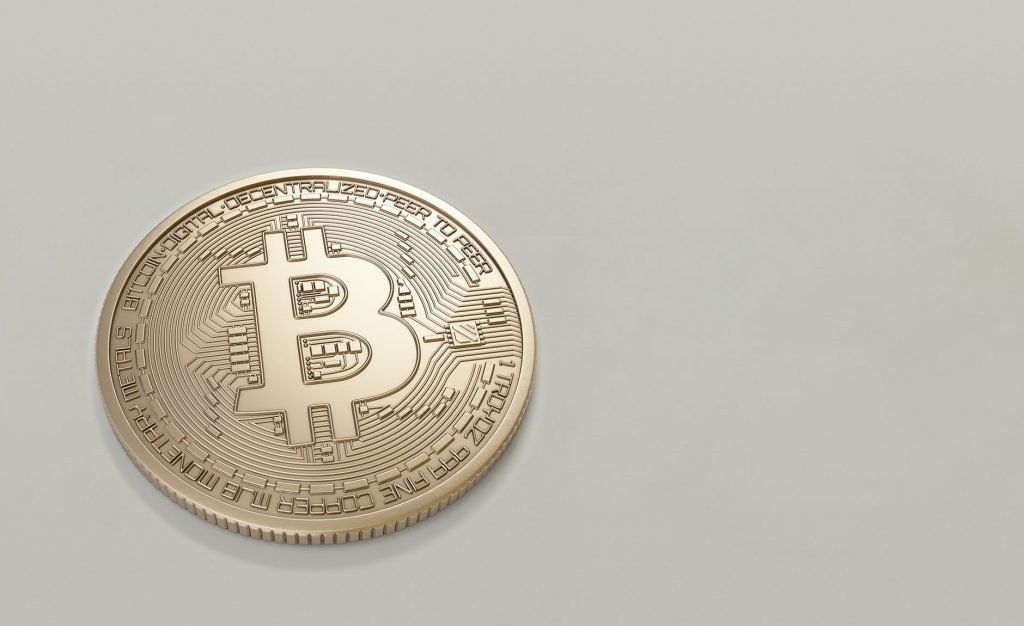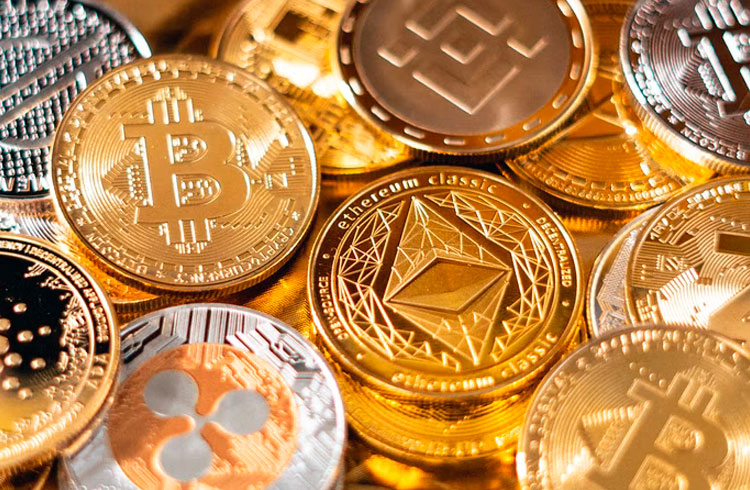Bitcoin Mining Pool Guide
16 min readTable of Contents
Bitcoin mining pools exist for the sole purpose of drawing or “pooling” miner resources together for a common objective of first winning a block reward of a cryptocurrency. It’s like the network inherently gravitates towards community and unison rather than solo mining. So, let’s see what those options are. How to choose good Bitcoin mining pool.

Bitcoin and blockchain, can to some, mean the same thing. However, they differ. On one hand, we have the layer and the other, the application. Both exist in the digital realm. Bitcoin is the first successful application of blockchain. The latter is a technology, experts say, with infinite applications.
Bitcoin exponential appreciation over the years
Bitcoin and cryptocurrencies are only the first of the many application of blockchain. Ethereum has expanded Bitcoin and blockchain functionalities but still, Bitcoin has the attention of investors of all cadre.
A big drawer was (and still is), Bitcoin exponential appreciation over the years. From cents in inception back in 2011 to thousands of dollars’ worth in less than 10 years, its community is solid and made up of developers, traders, investors, and true believers.
However, what stands out amongst believers is Bitcoin mechanics and what powers consensus in a way that transactions can be powered and confirmed without third parties. Blockchain tags along with decentralization through the satisfactory distribution of its nodes.
Blockchain incentivization system
These nodes are run by operators or miners who must sacrifice their resources, first to power the platform and to test the blockchain concept, and from 2015 onwards, to truly earn valuable coins as the network incentivizes users.
Behind the Bitcoin network is a blockchain incentivization system devised by Satoshi Nakamoto, the elusive founder, who was cognizant that without participation (miners) and rewards–regardless of how novel his idea was, his goals would have been futile.
Therefore, he introduced Bitcoin’s algorithm where users funnel in computing power in exchange for BTC rewards which will be halved every four years or so.
Dubbed the Proof-of-Work (PoW) consensus algorithm, miners who wanted to compete for the precious coins would be required to purchase valuable gear—now worth thousands of dollars and increasingly scarce, connect it to the blockchain, and mine BTC.
Bitcoin has expanded, it requires more “work” to mine BTC
But there is a catch.
The Bitcoin blockchain has over the years expanded and now, mining Bitcoin is much more than plugging in from your computer and racing against specialized rigs which are specially designed to mine networks powered by Proof-of-Work of which Bitcoin (and its forks) feature prominently.
The emission of Bitcoin, released every after 10 minutes or so, depends on many other factors chief amongst them being the number of participants (miners), the spot Bitcoin price, and the amount of hash (computing power) being funneled to the network.
The computing power (or hash) is a variable that keeps changing every year. And the gear that produces hash power keeps getting more efficient, using more power in exchange for a stronger punch in computing power, every year as data shows.
As such, not only will it be impossible for one to fine-tune their ordinary computer’s Central Processing Unit (CPU) to mine Bitcoin but even after purchasing the recent Bitmain (or any other vendor’s gear), it is not feasible to solo mine.
It’s like the network inherently gravitates towards community and unison rather than solo mining.
To stand a chance, and make Bitcoin mining profitable, one must join forces through a dedicated mining pool.
These pools are necessary not for the distribution and the robustness of the network but to stand up against the industrialization of the sphere by megaliths keen on monopolizing the scene and driving Bitcoin back to centralization.
Before we dig deeper, let’s first explore and understand two ways of mining Bitcoin.
How to mine in a Bitcoin Pool?
Thing is, Bitcoin—despite opposition, might just be the soundest form of money around according to data and statistics. And understandably, the race to own these precious coins take different forms.
You could buy, true, but the best way of contributing to the Bitcoin network is by mining BTC blocks. Mining is resource-intensive and can take a lot of your time during data configuration, and money since you must be plugged up to a mining pool or pay electricity.
Regardless of the option chosen, there are two main ways of mining Bitcoin:
Buy Bitcoin Mining gadget and mine Bitcoin
As attractive as this may sound, it is easier said than done (based on data) since there are a lot of variables to consider. First, the hardware and yes, your location.
Before you get going, you must have some sort of secure access to the Bitcoin network enabling you to own these precious coins.
However, this equipment doesn’t come cheap and uses a lot of energy. This is what you get since Bitcoin mining gear is usually ASICs which are fine-tuned for SHA-256 Proof-of-Work systems and nothing else.
They aren’t like GPUs which can be used in graphics or whose computing power can be funneled towards other causes like the decoding of COVID-19’s DNA.
You buy Bitcoin ASICs, use them till they are obsolete, dispose of them, and buy new ones to keep up. Hopefully, by then you would have made killing, more so if Bitcoin prices maintain its upward trajectory.
The latest Bitcoin mining gear from Bitmain is upwards of $2,000 and consumes over 2,000 Watts when powered. Worse, they are scarce and must be pre-ordered on a first-come, first-serve basis.
There is no time to waste if you want to have an edge and remain competitive. The latest models are tuned to emit the highest hash rate while consuming low power often through improvement in semiconductor technology.
As a result, they don’t come cheap.
Now assuming you get lucky and pre-order several mining gears
The next thing you should consider is your location and electricity rates. Bitcoin mining consumes power. Lots of it. You must therefore be prepared and ideally operate from a location where you either have a deal with your electricity distributor—preferably negotiate favorable rates so as not to get pressed—or utilize renewable energy.
Notably, there is a difference between mining Bitcoin at $0.10 KWh from those who mine somewhere in China at $0.03 KWh. The latter will have an electricity advantage and run rounds over you before you break even assuming you are plugged to the same mining pool.
The cost of energy is vital. Electricity is needed not only to power rigs but to run cooling equipment and for general noise attenuation.
Each Bitmain Antminer S19s is an Application Specific-Integrated circuit (ASIC) that produces around 65 dB of noise and if you have 10 of them running in a separate room or basement, it becomes a nuisance for you and the neighbors. You must seal the place for noise reduction. That’s not forgetting the heat which must be vented lest you become toast.
Once you take care of these environmental concerns, you must also configure your mining gear, select a mining software—of which there are several options like the CG Miner, BFGMiner, Easy Miner, or MultiMiner, and connect directly to the network or connect your combined gear’s hash power to a mining pool or different pools.
Here’s the trick…
A Bitcoin mining software compiles and confirms the most recent Bitcoin transactions by funneling work by allowing the miners to solve complex mathematics.
The trick here is to keep tabs with the latest mining software for your miners. They must be bespoke and up-to-date since getting this wrong may delay your rewards and dopamine triggers.
Simply, a Bitcoin mining software does the onus of providing you with an interface through which you will monitor and manage your miner’s setting.
This way, you can tune parameters such as your clocking speed, fan speed, and other performance aspects of your miners. Over and above everything, this software enables you to channel your hash to the network and start getting money depending on whether you go solo mining or join a mining pool (advisable).
Be careful and ensure that your ASIC miner is compatible with the selected software. The selected software must in turn be compatible with your computer’s operating software. Some can run perfectly in Linux while others can operate better in Windows, yet others are agnostic to the OS selected.
From reviews (subjective), the MultiMiner is recommended as it is simple to use and cross-platform. There are no command prompts. In place is a strong graphical interface that can easily power your Bitcoin mining needs. But nothing is cast on stone, do your own research, and chose whatever mining software suits you and your miners.
Thing is, should you also decide to join a Bitcoin mining pool or mine solo, there is no guarantee that you will win blocks and get the 6.25 BTC as reward. There are many Bitcoin miners who have invested thousands or even millions of dollars in Bitcoin mining, racing for blocks in vanity.
As such, this tends to be cut-throat and further exacerbated by the network’s difficulty adjustment. The more there are miners, the harder it becomes for your miner to discover the correct integer confirming the validity of transactions in a given block.
If you don’t want the hassle of purchasing gear and what’s not, you can simply opt for a Bitcoin cloud mining,
Buy Bitcoin Mining Packages from a Cloud Provider
Cloud mining is well, attractive, but there are inherent risks when mining for BTC.
Still, should it be your consideration (support is low), this is how it is Bitcoins mining is done.
Distinctively, you don’t do the mining. But rather, you have an option of purchasing hash power—and there are different packages, enabling the third party to do the mining and management of gear on your behalf. In this arrangement, a Bitcoin hash power purchaser utilizes a remote data center and through the offered processing power, profit from the proceeds.
Typically, the Bitcoin miner ends up being paid for their investment even if the gear wasn’t used to mine Bitcoin. Instead, after selecting a package, the amount you received will be based on the spot price of Bitcoin, your rented hash, and maintenance and electricity fees (MEF).
Often, the more hash rate you buy, the more the returns, and the lower the fees (MEF). But as it is with normal mining, returns are heavily influenced by Bitcoin spot prices.
Sometimes, you’ll also hear of cases in which the cloud mining provider terminates contracts whenever cryptocurrency prices fall below a certain level regardless of the validity of the existing contracts.
As such, before opting for this style, do your own research (DYOR). Determining whether Bitcoin cloud mining is effective and generally “worth it” is tricky. The rule of thumb is to keep track of news sites and read reviews of potential cloud mining operators.
Check their locations and whether there have been scandals before.
Check their locations and whether there have been scandals before. It is common for users to take to platforms like Reddit or Twitter to express their satisfaction or disgruntlement. This will help you make informed decisions.
Also, don’t forget to check their total hash rate as this will determine whether you have a chance to make a return. Usually, cloud mining operators tend to diversify by mining several coins at the same time. In any given package, a buyer will be told that his/her income streams are from mining operations of say BTC, Bitcoin Cash, BSV, and any other Bitcoin fork, or Proof-of-Work coin.
Note this though, at the end of your contract with the cloud mining provider, you won’t have any gear. Of course, it is welcomed considering the exchange you made for heat and noise and electricity bills depending on your usually unfavorable location.
However, for that, the provider, operating in Greenland and tapping on near-free renewable energy, can once it becomes obsolete dispose of your rented Bitcoin mining gear and buy “punchy” equipment to keep up with recent trends, and to attract more clients without consulting you.
Just don’t be scammed because of your lack of initial research as it will be costly.
At the end of the day, if you are mining solo or from a cloud mining provider, it is recommended that you join hands (especially if your investment is low) to stand a chance of earning the over $53,000 released by the Bitcoin network every 10 minutes or so.
Truth is, if you have one Bitcoin miner, says the Bitmain Antminer S19s, and decide to mine solo. Your attempts will be futile. You’ll watch with frustration as your gear becomes obsolete and your bills mount without earning anything from the network.
“Going in” together syncs more with the community ideals pushed by blockchain and its application including Bitcoin. Joining a mining pool or pools, therefore, makes sense even from a psychological (to prevent miner disillusionment) and economic perspective.
This is how Bitcoin mining pools work
As reiterated above, mining pools exist for the sole purpose of drawing or “pooling” miner resources together for a common objective of first winning a block reward of a cryptocurrency. These crypto rewards—including transaction fees since a block reward includes the 6.25 BTC and transaction fees included in that block—is distributed to all miners depending on the amount of computing power contributed towards the pool.
It’s not that easy though. There are other mechanics to consider to win a cryptocurrency. First, you must do your research (once more) before joining a cryptocurrency mining pool.
Obviously, not all cryptocurrency mining pools are the same. Some are legendary and have been the space since the very early days when Bitcoin mining pools were created and yet others were created recently but with attractive features—low fees and incentives to join.
What to check when choosing a mining pool
Regardless of what they offer, don’t be easily swayed.
Instead, use these age-old criteria to weed out mining pools and only settle for the most reliable and whose visions syncs with blockchain’s principles.
After all, a cryptocurrency mining pool is lucrative but the process of mining coins is complex, full of minute details that differentiate between futility and success.
Check these things when selecting pools for any cryptocurrency:
1. Transparency
It is straightforward as it is and should be the number one priority. Bitcoin is transparent, and so should the operator. You can’t get around this.
And by transparency, the cryptocurrency mining operator must expedite their obligations fairly and consistently while offering enough support. Better transparency translates to trustworthiness and could strengthen the pool. Ideally, at any one point in time, a Bitcoins miner should know his/her mining pool’s market share.
Is it the most dominant? If yes, what is the declared total hash rate? Are payouts made transparently? Or is the operator under-stating hash rate and keeping a part of miners’ payout? How does the pool fair against the current difficulty regime? All these data should be availed through a dashboard.
2. Payout Frequency and limits
This could depend on your gear. If you operate the latest gear with high hash power, prefer joining a pool that pays out frequently with high limits unless. Switch allegiance to rival pools with high payment frequency and low limits/thresholds once your gear begins to age. Older gear means less pay, lowering your profit number.
3. Fees
This should be your number one priority. Some mining pools charge fees when joining, others don’t. This is all part of the incentives model adopted by the operator. Still, a miner should pay attention to the pool structure and the mathematics that go into reward payout which usually includes some charges.
4. Pool security
Has the mining pool incorporated security measures to repulse attackers? How secure are block rewards and individual miners? Ask yourself these questions and even inquire directly from the pool operator for clarification.
5. Compatibility
Often check whether your miner is compatible with the pool infrastructure requirements. Certain mining pools may require you to run a very specific Bitcoin mining software while others won’t mind at all. Internet speeds also matter. The number of requirements often vary.
6. Task Assignment Mechanism
Depending on a mining pool, “work” is assigned to different Bitcoin miners differently. Difficult tasks are usually assigned to a stronger mining pool for uniformity and fairness in communication frequency subsequently balancing and effectively measuring the flow of hash rate to the mining pool serve, bearing in mind that miner’s capacity across the network varies.
7. Motive
Is the mining pool working towards the greater good for the network or wants to fork the network once the hash power number pumps? Know what the mining pool wants since once a mining pool controls over 51 percent of the total network computing power, it may decide to fork the network or double-spend transactions.
Overly, the number one objective of joining a pool is to stand a chance of getting paid and amassing your BTC stash. Therefore, aside from the above, a miner should differentiate between different mining pool payment methods.
Note that different Bitcoin miners with different weights may be part of the pool. The pool on its hand must have a fair and simple methodology of distributing rewards while remaining transparent enough without the possibility of agents playing the system.
Once you have gone through the paces, there will be many mining pools to choose from. Opt for those with the best reviews who meet the above selection criteria. If you are bent more on hash distribution, join upcoming Bitcoin mining pools.
Mining Pools Payment Methods
The most common way of sharing rewards comply with the following methods:
- Pay per Share (PPS): This method is not widely used by mining pools. Here, there is an instant payout for each share that is solved whenever blocks are mined. A miner will be paid depending on what he/she produced regardless of whether a block is found or not. If a pool doesn’t win a block, the miner is paid from the pool’s stash of cryptocurrency.
- Full-Pay-per-Share (FPPS): Unlike PPS where block reward is only distributed to miners, the FPPS distributes block rewards and transaction fees. Transaction fees within a given day are calculated and averaged before being distributed to miners subject to won blocks. This way, miners earn more–not less– because they not only receive transaction fees but also earn rewards.
- Proportional Approach (PROP): In this method, the reward is distributed proportionally to workers based on the number of shares each contributed towards the finding of the block. To further elaborate, a “share” is a measure of luck which is also probabilistic. If a miner was meant (as an example) to provide 1 TH/s (share) from a network with a 100 TH/s, it means the probability of the miner winning a block is one percent. Shares are measured in percentage, and the more it is met, the more the block rewards.
- The Pay per Last N Shares (PPLNS): This method varies from PROP, and instead of looking at shares contributed by a worker, it looks at the last fixed N shares regardless of the boundaries of the round. That is, payment depends on the percentage of shares contributed to the total number (N) of shares that are not based on luck. N is usually twice the network’s difficulty. Shares are variable as they are probabilistic and based on luck and difficulty. Payout is only when a block reward is found and the more the hash contributed, the more the shares and therefore, the higher the reward.
- Pay per Share+ (PPS+): This payment method is a hybrid of PPS and PPLNS, where the “+” is the transaction fees that is disbursed using the PPLNS method. This way, it means a miner will get to only receive a portion of the block’s transaction fees depending on the contribution of their hash rate. Whenever rewards are found, the mining system will distribute rewards based on the PPS style.
- Shared Maximum Pay per Share (SMPPS): this is similar to PPS but earnings are limited to what the Bitcoin mining pool earns at any given time. That is, a mining pool that uses this payment system, will never payout from their coffers more than they earn regardless of time and resources from the miner.
- Equalized Shared Maximum Pay per Share (ESMPPS): Same as SMPPS but earnings are distributed equally to all miners.
- Recent Shared Maximum Pay per Share (RSMPPS): Same as SMPPS but the payout is prioritized to the latest miners.
- Bitcoin Pooled mining (BPM): or Slush’s Pool is a payment system specifically designed for time and allegiance in such a way that a miner cannot switch allegiance in the middle of a mining round. Older shares are given fewer weights than new shares when mining blocks.
As it is, Bitcoin miners would prefer the FPPS system (all factors held constant) as they are safe from the variance risk which fluctuates over time. Since it is risky for the mining pools, associated fees are usually high.
However, the payment option is largely dependent on the mining pool. It can opt for any—preferably the best which suits their needs while cushioning against unforeseeable problems.
The PPS+ system is preferable if a mining pool is lucky and consistently finds blocks over time.
while the PPLNS bears low risks and as such, fees are comparably low.
Top Five Bitcoin Mining Pools
In no particular order, these are the best Bitcoin mining pools around:
- Slush Pool: It is the oldest in the scene and is run by a Bitcoin company based in the Czech Republic.
- BTCC: Is the dominant and operates from China. The company behind the mining pool also serves as a wallet and an exchange.
- AntPool: Is run by Bitmain, the world’s largest hardware manufacturer of ASICs. Bitmain has been accused of being malicious in the past but operates a popular mining pool.
- F2Pool: It is the second-largest mining pool with a combined hashrate of over 20 percent. Still, its interface is in Mandarin.
- Binance Pool: This is the latest entrant run by Binance, the world’s largest cryptocurrency exchange. It was launched in Q2 2020.
Others include Bitfury (it is private and no one can join), Poolin, Canoe, ViaBTC, Huobi, OKEx, and Bitcoin.com.
In Conclusion
A mining pool is indispensable for individual miners. Going solo simply won’t cut it because of the increasing competition and the industrialization of the cryptocurrency space. While attractive, a blockchain miner should take into consideration several factors as aforementioned before settling on a mining pool provider. There are costs aspects and the state of your gear but over and above everything, participation through active mining is vital for the survival of the network






